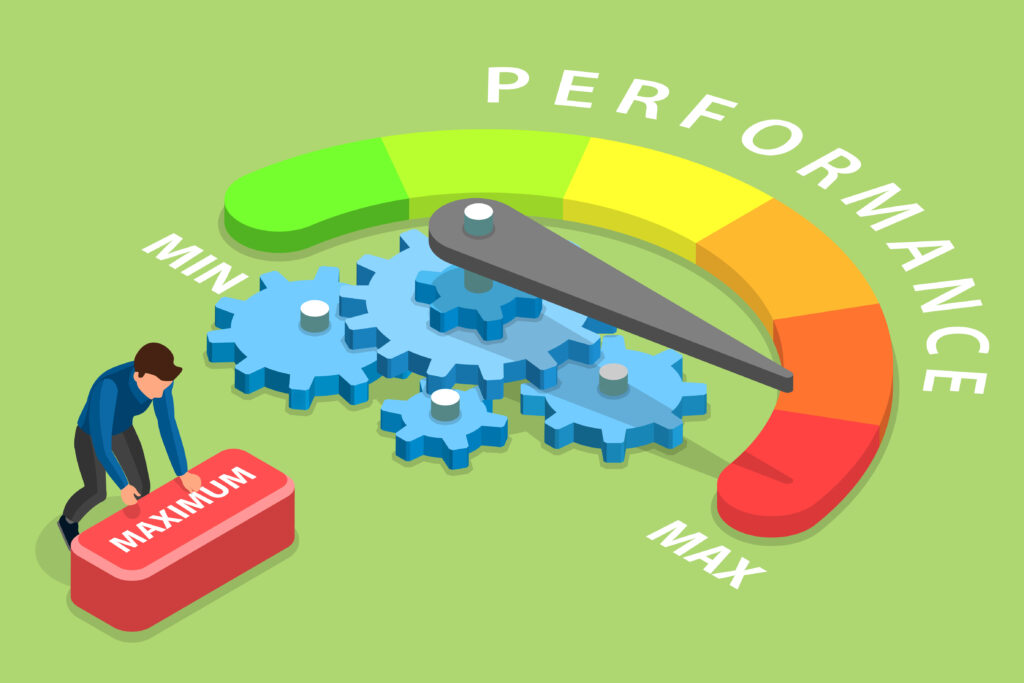Google Ads’ Performance Max Channel is a valuable tool for keeping campaigns on track to deliver optimal results. It’s a goal-based campaign type with placements across all Google Ads inventory — YouTube, Display, Paid Search, Demand Gen, Gmail, and Maps. Performance Max uses Google AI to bring real-time insights into consumer behaviors, devices, and ad context to optimize campaign performance across channels with Smart Bidding.
From new channels to new ad formats, responding to dynamic shifts in the digital landscape has never been more critical — yet challenging — for marketers. Performance Max ensures your advertising budget is allocated to the proper channels, increasing ROI and maximizing impact with your target audience.
Google has made several critical updates to Performance Max to keep pace with the evolving digital marketing landscape. Below, we outline these updates to help you stay current with the latest tools and features available.

Updates to Google’s Performance Max
Most campaigns today are cross-channel, so creating assets unique to each channel is critical to success. Additionally, asset variety can strongly influence campaign success. These new creative features save time and help to scale your campaign vision, no matter the channel.
Generative AI Creative Tools
Most campaigns today span multiple channels, and creating assets unique to each channel is critical. Not to mention, asset variety can strongly influence campaign success. Whether you’re looking for new image and messaging ideas or simply need to create assets quickly, Performance Max’s new creative features can save time and help you scale your campaign vision. We’ve outlined key updates below;
Content Creation
Google has introduced new generative AI features to quickly create customized text and image ads with just a few prompts, offering creative suggestions that will most likely resonate with your target audiences. This includes headlines, descriptions, and images. You can use performance data to analyze your most successful assets and generate new assets based on what will have the most impact.
Trend Predictions
Predictive insights will highlight emerging trends, along with adjusted bidding and targeting strategies across ad formats and placements, to ensure your creative stays current where it matters most. You can preview and export assets to Google Ads and receive best practices and specifications in return to ensure your creative is set up for success before deployment based on the latest trends.
Video Production
A new video production tool is now integrated directly into the Performance Max campaign setup, along with editing workflows, so you can easily create video assets for YouTube marketing. This includes new features like adding voiceovers, editing previously created videos, and trimming existing videos.
A/B Performance Testing
Google allows you to perform A/B tests with your content to better understand how Performance Max is driving additional conversion value compared to other campaign types.
For example, you can test Performance Max campaigns against Standard Shopping campaigns to gauge differences in outcomes and measure incremental lift. Similar settings are available for other performance campaigns, such as Display, Demand Gen, or YouTube. Campaigns in the control and trial groups will serve some non-overlapping fraction of the inventory based on the traffic split you choose.
Understanding where your content is giving you the most bang for your buck has never been more important, as recessionary pressures have placed ROI at the forefront of advertising programs. A/B testing allows you to gauge which type of campaign makes the most sense for your goals and also offers the hard data to justify your decisions. You’ll also be better equipped to double down on the features or settings that drive top results.
Brand Exclusions and Account-Level Negative Keywords
Building on its brand restrictions feature, Performance Max now offers brand exclusions, which prevent your campaign from serving Paid Search and Shopping ads on traffic that mentions or is related to the brands you select. They also block traffic from brand misspellings and brand searches in a foreign language. Advertisers can choose from a list of brands, including their own or third-party terms. If any brands are not listed, you can put in a request for their addition.
Additionally, marketers can now add account-level negative keywords to help maintain brand suitability and exclude traffic they don’t want to reach. This feature also excludes queries for other brands’ terms if you have a specific agreement with them. However, keeping an eye on exclusions is critical to ensure you’re not missing out on valuable conversion opportunities. Google does have plans to introduce campaign-level brand exclusions in the future, which will offer even greater control over ad placements.
Proactively deciding where and when your advertising content is delivered can make or break campaign success. These updates make it easier than ever to ensure that you’re reaching the people you want to convert, as well as those who are more likely to move the needle for your brand.
Search Themes
Google has rolled out search themes, which allow marketers to add custom information about their business to optimize placements. Previously, Performance Max relied on assets, feeds, and landing pages, allowing Google’s AI to incorporate insights that are not as apparent to the algorithm.
Google offers 25 unique search themes per asset group, and advertisers can create their own custom themes, similar to phrase match and broad match keywords on Paid Search. By blending human expertise with AI, search themes will significantly improve targeting precision.
This new feature allows you to more directly guide Performance Max to serve on placements where you may not have previously been found. By combining your expertise with Google’s AI, you can expand your reach on all channels and unlock more relevant traffic for your business, amplifying campaign performance.
Page Feeds
Google’s page feeds help marketers refine results from Search inventory by directing traffic to specific landing pages. You can group URLs by theme to simplify use in campaigns or asset groups. When you provide a page feed for landing pages, Google Ads can check that all relevant pages are indexed.
By leveraging page feeds to specify precisely which URLs to use with your Dynamic Search Ads, you can more clearly lay out the path to conversion for prospects. This new feature will enhance Google’s ability to determine when to show ads and, more importantly, where to direct people on your website.
URL Contains targeting functionality
Google has introduced URL Contains targeting functionality, which acts exactly as it does for Dynamic Search Ads. Marketers can now manually specify which URL to show ads to, ensuring that they’re seen by users who are actively engaged with or interested in content related to your product or service. It gets as granular as targeting pages with URLs that contain tokens (a way to give users access permission for various Web resources).
This new feature allows you to fine-tune your ad placements based on the web addresses your potential customers visit. With more control over how ads are served, you’ll reach a more specific and relevant audience that is more likely to convert.

Deeper Reporting Insights
Budget Pacing
Within reporting features, budget pacing insights uncover opportunities to optimize budget and performance. You can see how much you’ve spent and are projected to spend, along with current and forecasted conversion performance. You can identify opportunities to change or redistribute the budget to increase conversions.
It’s more important than ever to maximize ROAS (Return on Ad Spend) and prove your efforts. Budget pacing insights ensure that your money will be allocated to the proper channels in real-time and adapt to fast-changing consumer trends.
Search Terms
New search terms insights offer information on search categories by analyzing search terms where your ads appeared and grouping them into search categories and subcategories to provide you with key performance metrics for each. With these insights, you can understand which keywords have the highest CPC and refine your strategy.
Asset Group Performance
Google now allows marketers to see performance data specific to each asset group, including images, headlines, and audience. This is a big upgrade from simply seeing a summary view for asset groups as it allows you to break out the highest-performing groups to their own campaigns or deprioritize underperforming assets. These new insights can help you refine your creative strategy and optimize your budget.
Performance Max’s reporting updates allow you to go deeper into what’s actually moving the needle for your campaigns. It also allows you to put your performance into context with more dynamic insights so you can make more informed decisions about content, budgeting, and even keyword strategies outside of your Google Ads campaigns.
Performance Max Guide Enhancements
Google is continuously introducing new features to Performance Max. Their “Getting Started” has recently been updated with the latest step-by-step instructions for building more effective campaigns. This includes different Performance Max considerations depending on whether your business is a retail company, travel-related, or in the standard category, along with asset requirements and the latest reporting organized by objective. Give it a read to dive deeper into the new features outlined above.
J&L Marketing Can Supercharge Performance Max Campaigns
Performance Max offers a strong toolbox for digital marketers — but automation is best paired with human expertise. Many opportunities exist to increase your campaign performance and deliver more value for your business — J&L Marketing helps you supercharge your efforts. Not only do we keep a strong pulse on how the consumer landscape is evolving, but we also know how to adapt and improve strategies to stay dynamic.
Scale your abilities and improve advertising effectiveness with the right team. J&L Marketing offers Performance Max, Paid Search, Display Ads, Demand Gen, direct mail, and more. Reach out today to optimize your strategy for Google Ads Performance Max.



